
| Recorded by: Marilyn Westphal on 2025-11-05
Henderson Co.
Comment: | 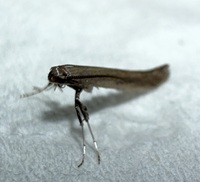
| Recorded by: Marilyn Westphal on 2025-11-05
Henderson Co.
Comment: |

| Recorded by: Jim Petranka and Becky Elkin on 2025-10-11
Madison Co.
Comment: | 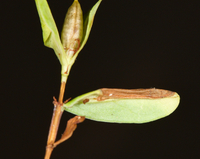
| Recorded by: Jim Petranka and Becky Elkin on 2025-10-11
Madison Co.
Comment: |

| Recorded by: Jeff Niznik, David George on 2024-08-07
Transylvania Co.
Comment: | 
| Recorded by: Jim Petranka and Mark Basinger on 2024-08-06
Mitchell Co.
Comment: |

| Recorded by: Jim Petranka on 2024-08-03
Madison Co.
Comment: | 
| Recorded by: Jim Petranka on 2024-08-03
Madison Co.
Comment: |

| Recorded by: Jim Petranka on 2024-06-16
Madison Co.
Comment: | 
| Recorded by: Jeff Niznik on 2024-06-15
Scotland Co.
Comment: |
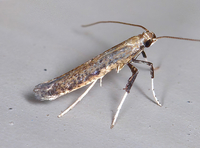
| Recorded by: Jim Petranka on 2024-06-14
Madison Co.
Comment: | 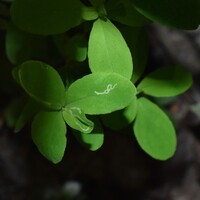
| Recorded by: David George, Jeff Niznik on 2024-06-10
Chatham Co.
Comment: |
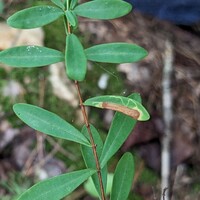
| Recorded by: Jeff Niznik on 2023-09-30
Harnett Co.
Comment: | 
| Recorded by: Jeff Niznik, Stephen Dunn on 2023-07-26
Chatham Co.
Comment: on Hypericum sp. |
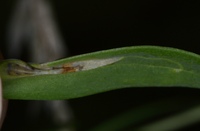
| Recorded by: Stephen Dunn on 2023-07-21
Orange Co.
Comment: | 
| Recorded by: Stephen Dunn on 2023-07-21
Orange Co.
Comment: |

| Recorded by: John Petrankaj on 2023-05-04
Orange Co.
Comment: | 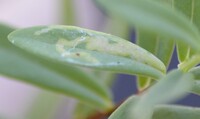
| Recorded by: Tracy S. Feldman on 2022-07-18
Durham Co.
Comment: |

| Recorded by: Jim Petranka on 2022-06-28
Madison Co.
Comment: | 
| Recorded by: Jim Petranka on 2021-10-06
Madison Co.
Comment: |

| Recorded by: Jim Petranka on 2021-04-11
Madison Co.
Comment: | 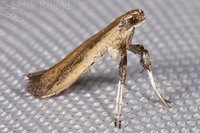
| Recorded by: Mark Shields on 2021-04-08
Onslow Co.
Comment: |

| Recorded by: Jim Petranka and Becky Elkin on 2020-06-19
Madison Co.
Comment: The upper surface of the leaf of Hypericum punctatum with two tentiform mines. | 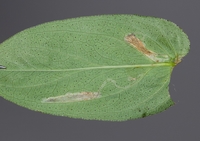
| Recorded by: Jim Petranka and Becky Elkin on 2020-06-19
Madison Co.
Comment: |
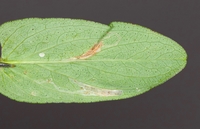
| Recorded by: Jim Petranka and Becky Elkin on 2020-06-19
Madison Co.
Comment: A leaf of Hypericum punctatum with two lower surface mines. Note the linear portion that eventually ends in a tentiform mine. See companion photo of the upper surface. | 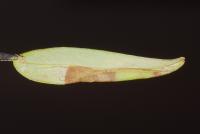
| Recorded by: Jim Petranka and Becky Elkin on 2019-11-04
Transylvania Co.
Comment: A lower-surface mine on Hypericum stragulum. Note the rather faint linear portion with a central frass line on the left that eventually widens into a blotch. |
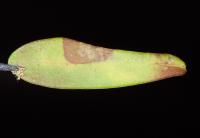
| Recorded by: Jim Petranka and Becky Elkin on 2019-11-04
Transylvania Co.
Comment: A view of the upper leaf surface of Hypericum stragulum. Only the blotch portion of the mine is visible from above (see companion photo of the lower surface). | 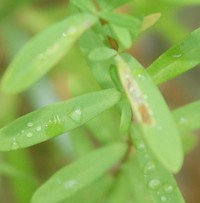
| Recorded by: Tracy S. Feldman on 2018-06-12
Wake Co.
Comment: |
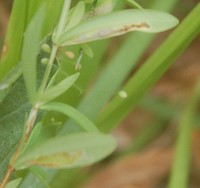
| Recorded by: Tracy S. Feldman on 2018-06-12
Wake Co.
Comment: Leaf mines on Hypericum hypericoides. | 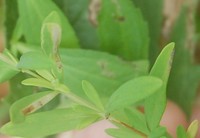
| Recorded by: Tracy S. Feldman on 2018-06-12
Wake Co.
Comment: |
|

 »
»

























